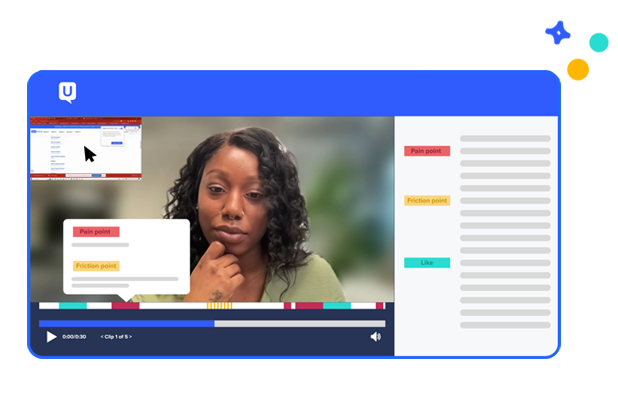
Boost your digital experiences by testing your competitors'

Do you know how your website stands up to the competition? To fully understand how your website stacks up, you need to test your customer's digital experience with your target audience.
If you’re limiting yourself to only testing your own website, you’re missing out on a very powerful—yet often overlooked—tool in your usability testing toolbox. Testing your competitor’s websites may provide you the valuable feedback you never knew you needed. Here are a few ways you can develop digital experiences that can get you ahead of your competition.
Compare your site with a competitor’s
Testing your competitor’s site along with yours is testing for the real world. Your customers have access to a lot of information and you know that they’re not assessing only your site when researching the products or services they want to purchase.
Testing your site alongside a competitor’s is fast and simple. Just ask testers to complete the same set of tasks on your site and on that of a competitor and compare the results. Still not sure? Check out these reasons why testing your site next to your competition is a fast, easy way to gather valuable human insight.
People are too nice
Have you ever had a friend or family member give you honest feedback? Chances are they were considerate of your feelings, and you were left with soft feedback that wasn’t very helpful (not to mention actionable). One way to offset this tendency is to have vendor-agnostic users test two websites in one test—yours and your competitor’s. Don’t give any indication of which site is yours and have them go through the same set of tasks for each. Since users won’t know which site is yours, you’ll find they’re more likely to give candid, honest feedback.
People need context
If you drop testers onto your site and ask them whether a page works as expected or is a good experience, you may get some useful feedback. However, to get more actionable feedback, it’s helpful to give users some context to guide their thinking.
For example, give testers a scenario they can think and work through. Tell them to perform specific actions on your site that align to the goals of your page and can easily be measured against your competition. This parallels real user experience. When a customer visits your site, there’s a strong chance they’ve also checked out your competition. How easily they’re able to perform these specific actions on your page versus the competition will ultimately provide the human insight you need to beat out your competition.
Competition is everywhere
Your competition isn’t just your competition—it’s every great experience your customers encounter on a daily basis. Whether it’s Netflix or Amazon or Zappos, your customers demand the world-class experiences they’ve come to expect.
For years, Blockbuster (remember them?) thought of its competition as the Dollar Video down the street. They focused on those types of competitors because they were the most similar to them. However, customers were really weighing Blockbuster against Netflix and Redbox. As Blockbuster found out, making assumptions about who your competitors are is a dangerous practice.
By taking advantage of testing user experiences other than your own, you can learn about your customer’s typical journey, and find out who your competition really is. In this scenario, you prompt testers to respond to more open-ended questions, like how they would make a hotel reservation or buy the cheapest concert tickets. By doing this, you’re letting customers reveal to you how they make decisions, which may or may not include your business. Through this type of competitive testing you can leverage insight to adapt and work your way into a customer journey you may not be a part of.
Think outside the site too
If your competitor comes out with a cool new feature, don’t panic—test it! Before you scramble to compete with a new product or feature that your competitor has launched, conduct a few quick tests to understand what your customers or prospective customers think about it.
You can run remote unmoderated tests, or set up a few customer interviews if you want to dig a little deeper. You may find that the feature your competitor spent so much time and resources on isn’t what customers want or need. On the other hand, you may find that the feature resonates well with your customers, and now you’ll know exactly why. By testing competitor upgrades and features, you can uncover valuable insight that should inform how you move forward with your own product development lifecycles.
If you’re only testing your own properties, you’re missing out on key customer insight. Testing competitor’s websites, products, and features—to name a few—can save you time, money, and resources spent on unnecessary development. Whether you’re a SaaS, ecommerce, or services company, your customers are comparing you to known (and possibly unknown) competitors. Shouldn’t you, then, be doing the same?
Next time you create a usability test for your own product, consider how testing a competitor’s could enhance your research and provide human insight that could redefine what you think you know.

Get actionable insights today
Uncover human insights that make an impact. Book a meeting with our Sales team today to learn more.





